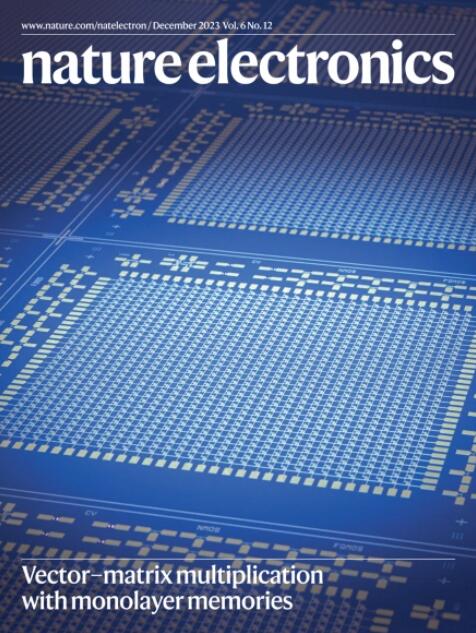Residue-free wafer-scale direct imprinting of two-dimensional materials
IF 40.9
1区 工程技术
Q1 ENGINEERING, ELECTRICAL & ELECTRONIC
引用次数: 0
Abstract
Two-dimensional (2D) semiconductors have the potential to replace silicon in next-generation electronic devices. However, despite advances in proof-of-concept device demonstrations and wafer-scale crystal synthesis, the lack of a compatible residue-free patterning technology has hindered industrialization. Here we describe a metal-stamp imprinting method for patterning 2D films into high-quality wafer-scale arrays without introducing chemical or polymer residues. A metal stamp with a three-dimensional morphology is used to form a local contact at the stamp–2D interface. The process selectively exfoliates some of the 2D material while leaving 2D arrays on the growth substrate. Microscopy and spectroscopy characterizations confirmed the clean surface and undamaged crystal structure. A statistical analysis of 100 back-gated molybdenum disulfide (MoS2) transistors and 500 top-gated logic circuits found a 20-times-lower variation of the threshold voltage compared to a reactive-ion-etching-based patterning process. The device yield on a 2-inch wafer was 97.6%. A three-dimensional metal stamp can be used to selectively exfoliate two-dimensional materials, allowing the remaining material to be patterned into two-dimensional arrays without leaving chemical or polymer residues.


二维材料的无残留晶圆级直接压印
二维(2D)半导体有可能在下一代电子设备中取代硅。然而,尽管在概念验证设备演示和晶圆级晶体合成方面取得了进展,但缺乏兼容的无残留物图像化技术阻碍了产业化。在这里,我们描述了一种金属印迹方法,用于将2D薄膜图图化成高质量的晶圆级阵列,而不引入化学或聚合物残留物。使用具有三维形态的金属图章在图章-二维界面形成局部接触。该工艺选择性地剥离一些2D材料,同时在生长基板上留下2D阵列。显微镜和光谱学表征证实表面清洁,晶体结构完好无损。对100个背门二硫化钼(MoS2)晶体管和500个顶门逻辑电路的统计分析发现,与基于反应离子蚀刻的图案化工艺相比,阈值电压的变化降低了20倍。2英寸晶圆上的器件良率为97.6%。
本文章由计算机程序翻译,如有差异,请以英文原文为准。
求助全文
约1分钟内获得全文
求助全文
来源期刊

Nature Electronics
Engineering-Electrical and Electronic Engineering
CiteScore
47.50
自引率
2.30%
发文量
159
期刊介绍:
Nature Electronics is a comprehensive journal that publishes both fundamental and applied research in the field of electronics. It encompasses a wide range of topics, including the study of new phenomena and devices, the design and construction of electronic circuits, and the practical applications of electronics. In addition, the journal explores the commercial and industrial aspects of electronics research.
The primary focus of Nature Electronics is on the development of technology and its potential impact on society. The journal incorporates the contributions of scientists, engineers, and industry professionals, offering a platform for their research findings. Moreover, Nature Electronics provides insightful commentary, thorough reviews, and analysis of the key issues that shape the field, as well as the technologies that are reshaping society.
Like all journals within the prestigious Nature brand, Nature Electronics upholds the highest standards of quality. It maintains a dedicated team of professional editors and follows a fair and rigorous peer-review process. The journal also ensures impeccable copy-editing and production, enabling swift publication. Additionally, Nature Electronics prides itself on its editorial independence, ensuring unbiased and impartial reporting.
In summary, Nature Electronics is a leading journal that publishes cutting-edge research in electronics. With its multidisciplinary approach and commitment to excellence, the journal serves as a valuable resource for scientists, engineers, and industry professionals seeking to stay at the forefront of advancements in the field.
 求助内容:
求助内容: 应助结果提醒方式:
应助结果提醒方式:


